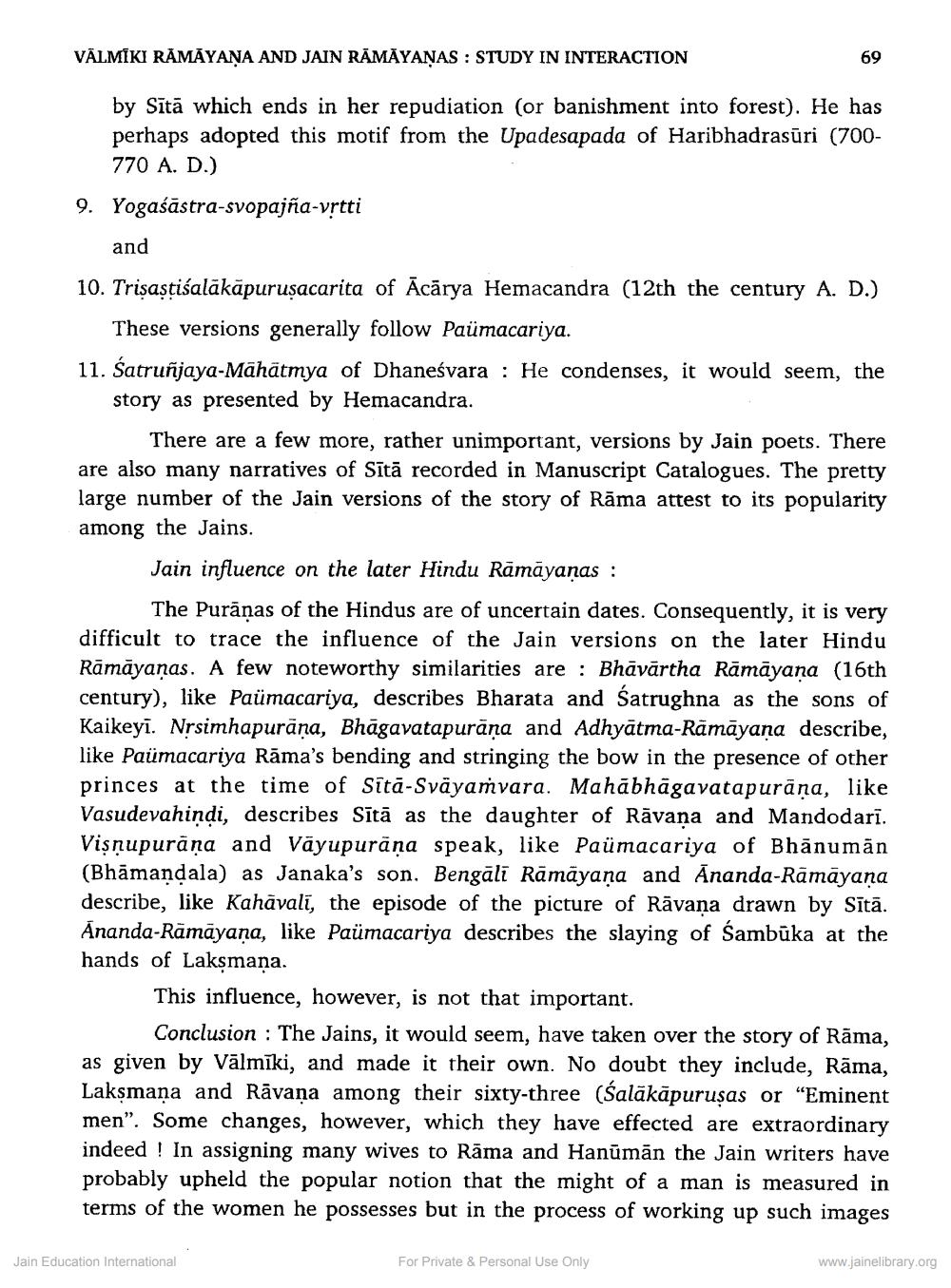________________
VĀLMIKI RĀMĀYAŅA AND JAIN RĀMĀYAŅAS : STUDY IN INTERACTION
by Sītā which ends in her repudiation (or banishment into forest). He has perhaps adopted this motif from the Upadesapada of Haribhadrasüri (700770 A. D.)
9. Yogaśāstra-svopajña-vrtti
and
10. Trisastiśalākāpuruşacarita of Ācārya Hemacandra (12th the century A. D.)
These versions generally follow Paümacariya. 11. Šatruñjaya-Māhātmya of Dhaneśvara : He condenses, it would seem, the story as presented by Hemacandra.
There are a few more, rather unimportant, versions by Jain poets. There are also many narratives of Sītā recorded in Manuscript Catalogues. The pretty large number of the Jain versions of the story of Rāma attest to its popularity among the Jains.
Jain influence on the later Hindu Rāmāyaṇas :
The Purāņas of the Hindus are of uncertain dates. Consequently, it is very difficult to trace the influence of the Jain versions on the later Hindu Rāmāyanas. A few noteworthy similarities are : Bhāvārtha Rāmāyana (16th century), like Paümacariya, describes Bharata and Satrughna as the sons of Kaikeyī. Nrsimhapurāņa, Bhāgavatapurāņa and Adhyātma-Rāmāyana describe, like Paümacariya Rāma's bending and stringing the bow in the presence of other princes at the time of Sita-Svayamvara. Mahābhāgavatapurāna, like Vasudevahindi, describes Sītā as the daughter of Rāvana and Mandodarī. Vişnupurāņa and Väyupurāņa speak, like Paümacariya of Bhānumān (Bhāmandala) as Janaka's son. Bengali Rāmāyana and Ananda-Rāmāyana describe, like Kahāvalī, the episode of the picture of Rāvaņa drawn by Sītā. Ananda-Rāmāyana, like Paümacariya describes the slaying of sambūka at the hands of Laksmana.
This influence, however, is not that important.
Conclusion: The Jains, it would seem, have taken over the story of Rāma, as given by Vālmīki, and made it their own. No doubt they include, Rāma, Laksmana and Rāvana among their sixty-three (Salākāpuruṣas or “Eminent men". Some changes, however, which they have effected are extraordinary indeed ! In assigning many wives to Rāma and Hanūmān the Jain writers have probably upheld the popular notion that the might of a man is measured in terms of the women he possesses but in the process of working up such images
Jain Education International
For Private & Personal Use Only
www.jainelibrary.org




